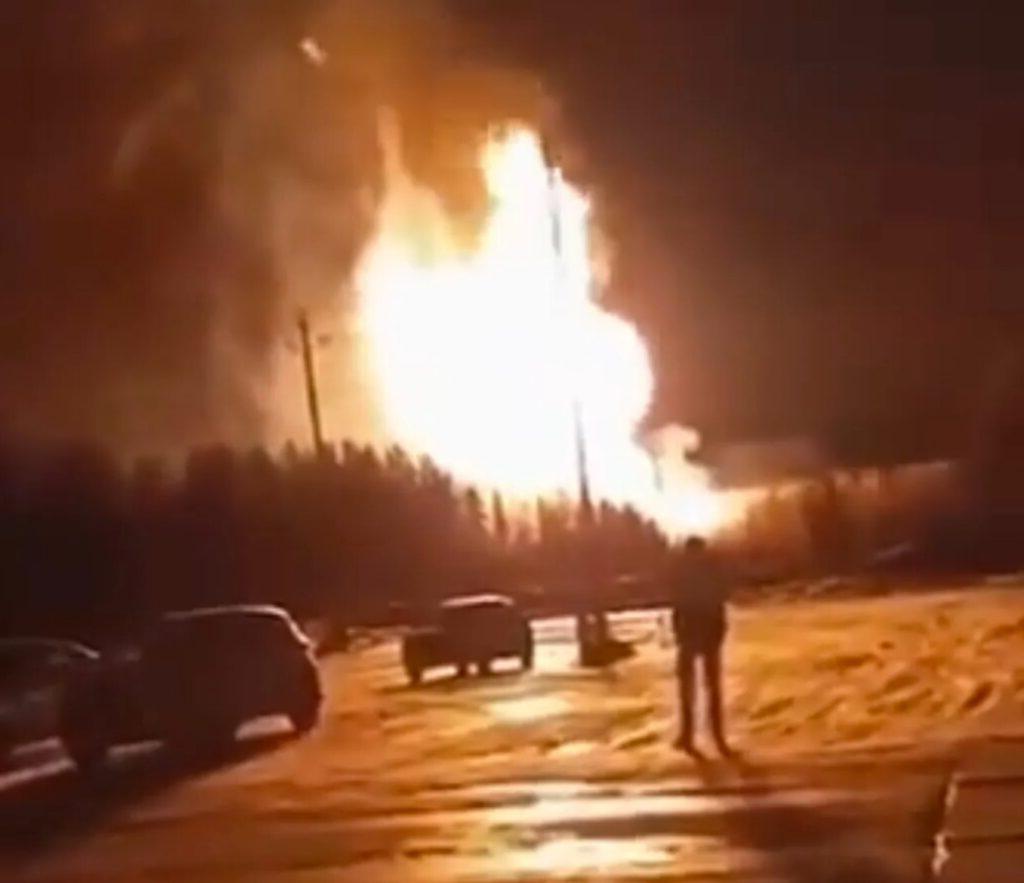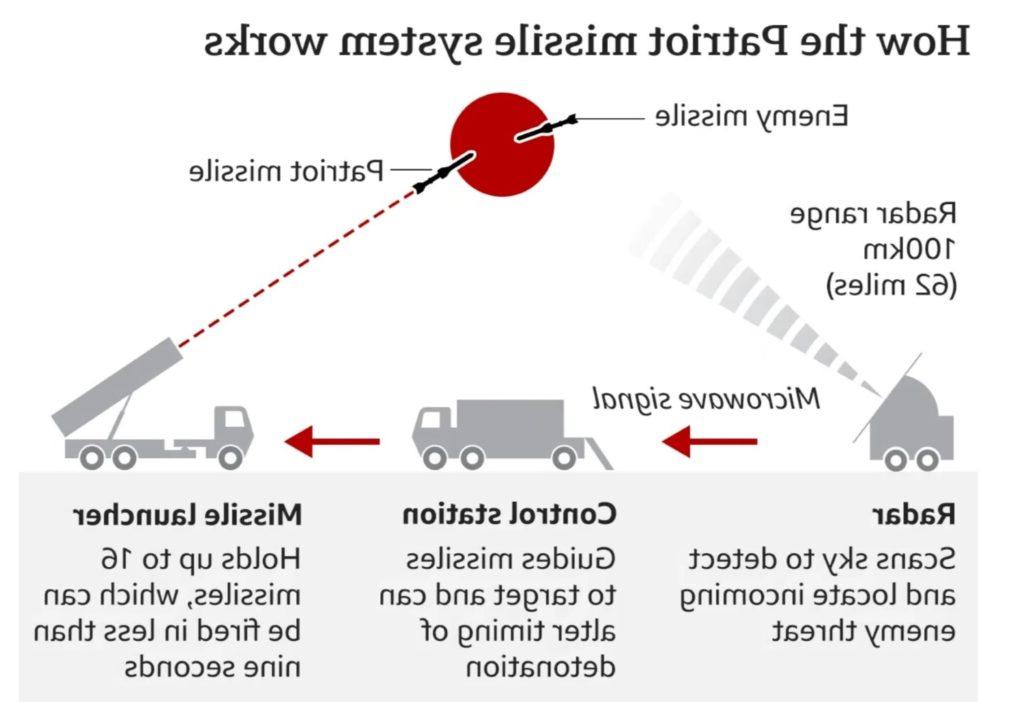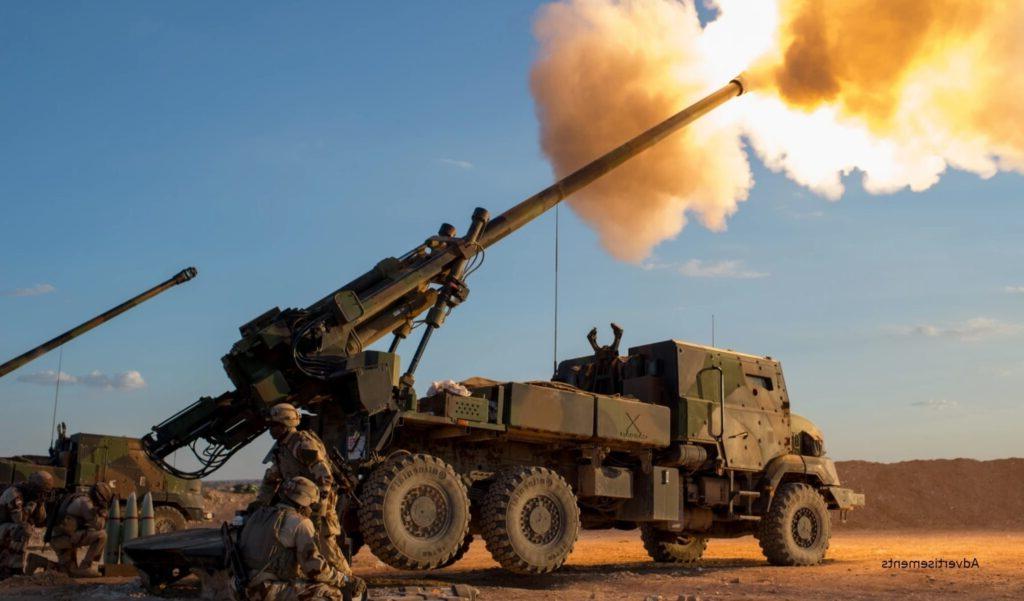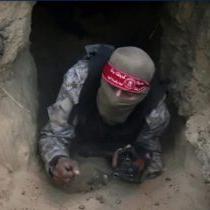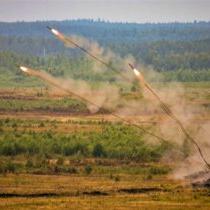
Last month I provided a Situation Report (SitRep) on the Ukraine war in the areas of geography; air; sea; cyber/comms; information; infrastructure/petro; and economic warfare. This month I will analyze logistics/equipment; human mobilization; intelligence/leadership; and land warfare.
Logistics and Equipment
The Russians rely largely on rail networks to bring supplies to the front. These are proving vulnerable to sabotage, while the internal Ukrainian rail system has been attacked only rarely. RailFreight.com reports that over 50,000 train movements in Russia have been delayed or prevented by sabotage and lack of well-trained staff and spare parts. The Russians are working 24/7 to build a 250-mile rail link across the land bridge north of the Sea of Azov; this could be a major game-changer.
The Russians are producing about 1500 tanks per year, but 1200 of these are just old refurbished Cold War-era, and only 300 are modern, new T90M or T72B3M vehicles. Astoundingly, ALL Russian tanks, new or old, can be destroyed by $500 FPV (first person view) Ukrainian drones, while all Western tanks supplied to Ukraine are much more survivable to this threat. (Although the few expensive Abrams tanks supplied by the US have been withdrawn from the front line, to avoid damage by Russian drones.)
Ukrainian intelligence states that confirmed Russian equipment losses since the war began are over 7255 tanks, 13,900 armored personnel carriers (APCs), 11,800 artillery systems, 1040 multiple-launch rocket systems, 348 aircraft, 325 helicopters, 2118 cruise missiles, and 15,900 trucks and other vehicles. These massive losses are not sustainable. (Compare the figure of 13,900 Russian APCs lost with the fact that entire British military only has 845 APCs, and the 7255 Russian tanks lost with the pitifully few 213 main battle tanks in the entire British military!)
The vehicle destruction ratios are incredible. For example, in the recent months-long, fierce battle for Avdiivka, the Ukrainians lost only 50 combat vehicles (tanks and APCs), while the Russians had 700 destroyed. This ratio is not sustainable by the Russians. They are now replacing armored APCs with Chinese-made, unarmored Desertcross 1000-3 “golf carts” – certain death for the occupants.
Expert David Axe of Forbes magazine states that “Ukraine is winning the war of attrition” in vehicles, equipment and men, even after the loss of Avdiivka and other territory.
Russian corruption in military procurement is deep and widespread. One study of the Russian economy estimated that 25% of GDP is lost to corruption, and military corruption is almost certainly much worse. The result is that front line Russian soldiers have often been provided with inferior, outdated or even non-existent weapons, ammunition, vehicles, planes, clothes, food, training and other items. However, this situation is slowly improving, at least for basic light infantry items.
Air defense has been excellent on the Ukrainian side, but is degrading rapidly since the West has not been supplying replacement Patriot missiles and other air defense ammunition. The result has been the destruction of major electricity generating plants in Ukraine, especially in Kiev. Also, numerous Russian FAB-500 and FAB-1500 huge gliding bombs are pulverizing Ukrainian trench lines.
Russian air defense is weaker, and will weaken further if the Ukrainians use their GLSDBs (ground-launched small diameter bombs) and sixteen F-16s (promised in 2024 but not yet delivered) wisely. Newly developed Ukrainian RAM II loitering drones with a 19-mile range are already attacking Russian air defenses and other assets, and a Ukrainian 900-mile attack in April seriously damaged the only Russian factory manufacturing Shahed drones, in distant Tatarstan. Ukrainian innovations such as remotely piloted light aircraft loaded with explosives have targeted Russian oil refineries and destroyed an astounding 27 percent of the country’s refining capacity in just a few months (from 907,000 barrels per day down to just 660,000 bpd, according to Reuters calculations in mid April). These effective attacks continue every week.
Overall, some advantage to Ukraine.
Human Mobilization and Casualties
According to US estimates, Russia fielded 360,000 ground troops in Ukraine and has partially mobilized twice after suffering 350,000 (or perhaps 460,000+) KIA/WIA casualties. Putin claims to have 600,000 personnel inside Ukraine, and states he will recruit 400,000 more soldiers in 2024 in two entirely new armies. As with almost all his statements, these are likely lies, and the real figures are more likely 400,000 and 200,000 – still large numbers, compared to 200,000 and 200,000 for Ukraine.) At the end of March he signed a decree to mobilize 150,000 troops, on top of the 30,000 per month he was already bringing in (which almost exactly matched the 30,000/month he was losing via KIA/WIA/MIA and captured).
Although the Russians have and will have more soldiers on the front than the Ukrainians, most Russian soldiers are young, ill-trained, ill-equipped, and unmotivated. In the February battle of Avdiivka, the Ukrainians were outnumbered by 7 to 1, but held off the Russians for five months, who suffered astounding casualties of almost 50,000 KIA/WIA to capture just 10 square miles. (This figure approaches the 58,300 US soldiers killed in the entire 12-year Vietnam war.) Consider too the little-known but amazing battle of Krynky on the south side of the Dnipro River. In a cleverly chosen terrain location, since October 2023 about 500 Ukrainian Marines of the 35th Brigade have destroyed over 157 Russian tanks, APCs and howitzers and thousands of Russian troops, while losing only about 24 major equipment items and suffering a few hundred casualties. Using drones, artillery and mines, the Marines regularly destroy 90% of the tanks and APCs that attack them, over and over and over.
Russian losses of personnel appear unsustainable. But it should be recalled that Putin first press-ganged Ukrainians living in captured Ukrainian territory to serve in the Russian army, then recruited Russian convicts, next recruited from Russia’s 190 ethnic minorities, and is now recruiting Indians and Nepalese men. Putin is quite happy to kill off all of these populations.
The average age of Ukrainian soldiers is incredibly high, at 43. This is due to a policy of not drafting young men until they are at least 27. This policy was finally changed to age 25 in early April. A full mobilization is needed, but it will not be politically popular.
In the US Army in World War II, a front-line soldier who was in actual combat in France and Germany for 100 days between D-Day and VE Day was rare, due to rotations out. Many Ukrainian soldiers have already been in combat for over 200 to 400+ days, often with no rotations or vacations. This is not sustainable, and is in the process of being fixed.
Ukrainians are by and large much better trained and more technically skilled and motivated than their Russian counterparts. Ukraine was the center of Soviet technological development, especially in IT and space technology. Ukraine is credited with developing the first computer hard disk drives, the world’s largest airplane (the Antonov 225), prosthetic heart valves, the world’s first production helicopter, the world’s first electric tram, nuclear submarines, and numerous other important innovations.
WorldPopulationReview.com states that in 2024 Russian males have an astoundingly high rate of alcoholism of 36.9%, while Ukraine had a much lower but still serious male rate of 11.5%. Drunks do not make good soldiers, sailors or Top Gun pilots!
It is reportedly possible that France will send ground forces to Ukraine. (Sacre bleu! Ah, la vache! Zut de zut! Reste baba!) After dozing for the last two years of the war, the French are suddenly now leading NATO in supplying arms to Ukraine, and even threatening to send their own troops in. Apparently the French have just figured out that Russia is backing all those many recent coups d’etat in French West Africa, and threatening the supply of France’s vital uranium supplies from Niger and Kazakhstan. Since 60% of French electricity is generated by atomic power, France now understands it is already in a major economic and military cold/warm war with Russia.
Overall: moderate advantage to Russia, due to their much greater population and willingness to use relentless “human meat waves” of men they don’t care about.
Intelligence and Leadership
Ukrainian intelligence was poor before the invasion, in not believing the Russians would strike. But now the GUR (Ukrainian military intelligence) is very good, is assessing the battlefield well with drone surveillance, and in launching impressive attacks behind Russian lines. Ukrainian computerized battlefield management (via Palantir software) and facial identification and personal intelligence (using Clearview software) is so advanced that the US and other countries are far behind. Ukraine has become the military laboratory for startups and large firms seeking to understand and prosecute future wars.
By contrast, Russian battlefield intelligence was pathetic before the invasion, and has not improved much except for successes in its global information war efforts.
Re military and political leadership, Ukraine is more agile, innovative, intelligent and inspiring. Russia is excellent on military defense, however.
Observers agree that Ukraine and its leaders are generally following the rules of war; by contrast, the Ukrainian national police have documented over 116,000 war crimes committed by the Russian, or about 155 per day. There are undoubtedly many, many more that have escaped documentation.
Overall: advantage to Ukraine.
Land Warfare
Since February 2022, the Russians initially captured 46,000 square miles of Ukraine, but then lost 29,000 to an astounding Ukrainian victory. However, the summer/fall 2023 ground offensive by the Ukrainians only succeeded in penetrating a few areas, due to massive, well-built Russian minefields, bunkers and trenches and the lack of Ukrainian air superiority, sufficient mine clearing machinery, and artillery shells.
The land war is now still very active and the Russians are gradually gaining ground in a few areas, as they rush to seize territory before the US $60 billion aid package takes effect. According to the well-respected Institute for the Study of War, “Russian forces will likely make significant tactical gains in the coming weeks as Ukrainians wait for US security assistance to arrive at the front, but remain unlikely to overwhelm Ukrainian defenses.” I agree, but caution that a Russian breakthrough is possible.
A group of NGOs estimated in February 2024 that about 42 Ukrainian civilians (including many children) were killed or injured every day by Russian missiles and drones. Over the last six months, US aid and air defense – stalled by one man, Speaker Mike Johnson — could have prevented perhaps 90% of those casualties. Thus, Johnson has the blood of about 6800 civilian deaths and woundings on his hands (180 days x 42/day x 90% = 6804). Johnson reportedly credits “extensive prayer” with his policy reversal, but there is no evidence of contrition for his mortal sins.
Overall: advantage Russia in the short term, followed by slight advantage to Ukraine beginning in the late summer of 2024.
Conclusions
The war is likely to last about three more years, by which time over 1 million Russian soldiers will have been killed or seriously wounded, as will have about half a million Ukrainian soldiers and tens of thousands of Ukrainian civilian children, women and men.
Our original question was, “Who is winning the war?” I suggest that this SitRep analysis shows that the Ukrainians are doing much better than most commentators understand, especially in the areas of the war at sea, intelligence and leadership, logistics and equipment, cyberwar, infrastructure, and petro-war. A good analogy would be Britain in World War II just before the invasion of North Africa. Things looked bad for the West, but eventually the Brits prevailed and the Nazis lost – with tremendous help over several years from the USA, Canada, Australia, New Zealand, India and other allies. BUT, that help was essential for Allied victory.
Photos courtesy Lew Toulmin
- 1. This map of the major routes in the Russian rail system shows its focus on the western part of the country. The system is the third longest in the world, after the US and China, and also third in volume of freight hauled. Rail is the main method for military transport, and the specialized unit of the Russian Army for rail transport and protection has 28,500 troops. These troops are on top of the 700,000 civilian employees of the rail system.
- 2. Saboteurs from the SBU (Ukrainian Security Service) blew up a train in the vital, 9.5-mile-long Severomuysky Tunnel, part of the Baikal-Amur Mainline (BAM) line in eastern Russia in November 2023. This line brings in Chinese military supplies to Russia and is a symbol of Russian engineering prowess. Traffic was rapidly restored, however.
- 3. Lt. Gen. Kyrylo Budanov is the head of the Main Directorate of Intelligence (HUR) of the Ukrainian Ministry of Defense. There have been over ten Russian assassination attempts against him. In the latest one, in November 2023, he and his wife Marianna were poisoned with heavy metals, but survived. He has participated in raids behind the lines in Crimea, and was treated at Walter Reed Medical Center after being wounded in Donbas. In 2024, at 38 years old, he won the prestigious Hero of Ukraine award.
- 4. A Ukrainian AQV-100 Scalpel first person view (FPV) attack drone is (amazingly) capable of destroying a Russian main battle tank with its small 2.2 pound warhead. The Scalpel is manufactured by One Way Aerospace, and has a range of 6 miles, a time to target at maximum range of 12 minutes, and a cruising speed of 30 mph. It costs about $1000 and includes “terminal homing,” so it can evade Russian jamming in the last few seconds of its attack.
- 5. A Russian T-95 main battle tank worth $4.5 million, destroyed by a $500 Ukrainian FPV drone in March 2024. That’s the way to win a war.
- 6. A Patriot missile battery relies on its radar to identify and track targets up to 62 miles away, then fires one or more $4 million missiles which have a 90%+ success rate of interception. Ukraine has had only about 3 such systems, which cost about $1.1 billion each — $400 million for the ground equipment and $690 million for the missiles. One or two of these three were recently hit by the Russians. Since Mike Johnson held up vital resupply of missiles for six months, with many resulting Ukrainian deaths, the Ukrainians have asked the EU to supply 7 of the 100-odd systems that the EU possesses. None have been forthcoming so far.
- 7. A Caesar 155 mm self propelled gun from France is one of the best donations made by any ally to Ukraine. The weapon can “shoot and scoot” within 40 seconds of firing, which is vital due to Russian radar-controlled counter-battery fire. The Caesar has an accurate range of about 25 miles with normal ammunition and 34 miles with rocket-assisted ammo, and can fire six rounds per minute.
- 8. An attack by ISIS-K on the Crocus City Concert Hall in Moscow on March 22, 2024 killed over 130 people and wounded hundreds more. It was the worst terrorist attack in Europe since 2004. Both the US and Iran warned Russian “intelligence” that an attack on a concert in Moscow was coming, but these warnings were publicly dismissed. When responding, Putin dithered for almost a day before blaming Ukraine, the US and the UK. On April 11 a US spokesman stated that evidence showed that ISIS-K was “solely responsible” for the attack, but there are some suspicious indicators that the Russian FSB may have instigated, paid for, or at least been aware of the imminent attack.
- 9. The hilarious but serious 69th Sniffing Brigade of the North Atlantic Fellas Organization (NAFO) uses biting humor to make fun of the Russian “orcs,” and raises money for convoys of military vehicles to be sent to Ukraine from Estonia. The Brigade has raised $7 million, which has paid for 330 pickup trucks and ambulances (both used for evacuation of the wounded), 234 drones and 83 new anti-drone electronic jammers. As shown here, each vehicle is camoflaged, given uprated tires and suspension, and painted with the Ukrainian flag and the flag of the donating country (here Estonia). Some are up-armored. Vehicles have been donated by the US, UK, Belgium, Holland, the Baltics, and others.


